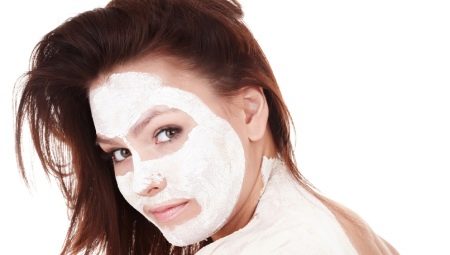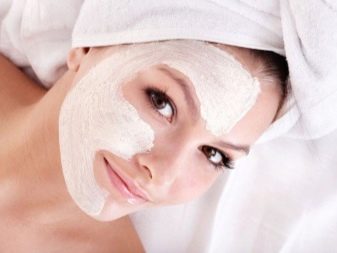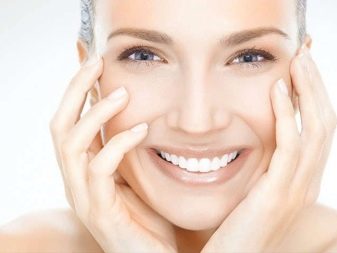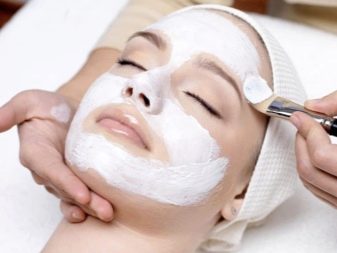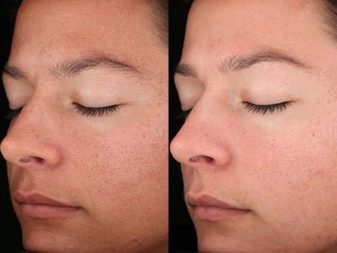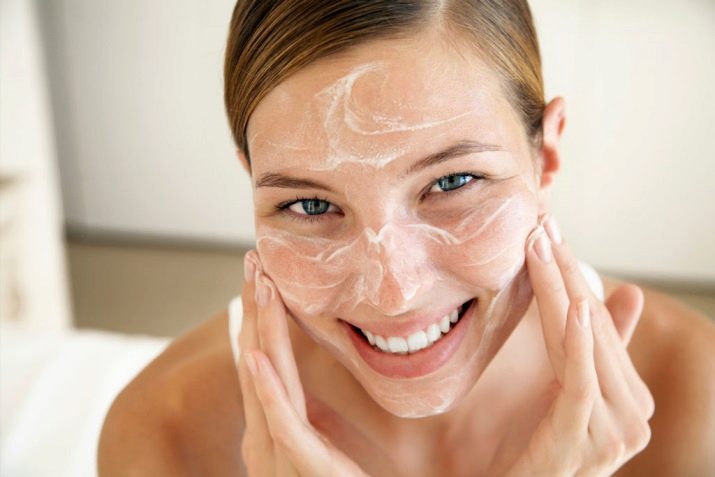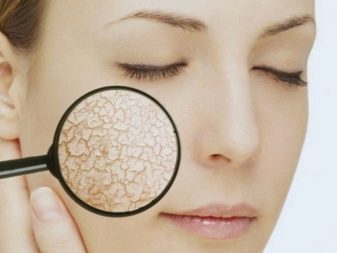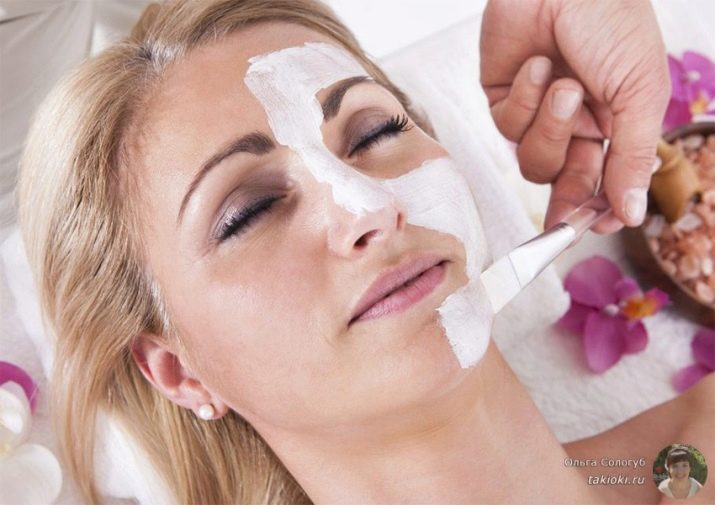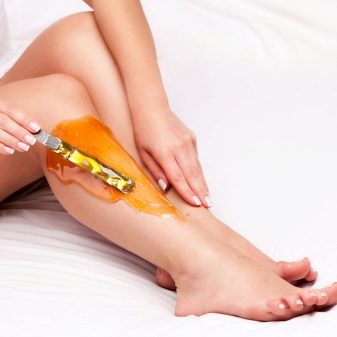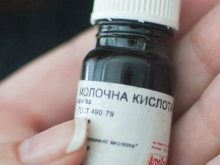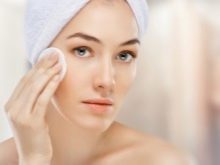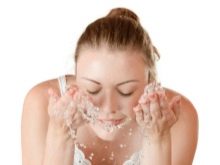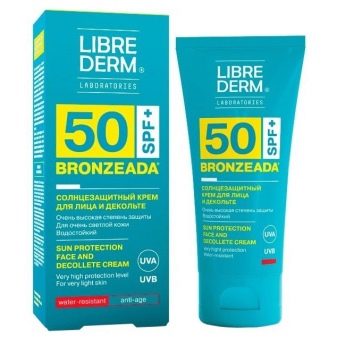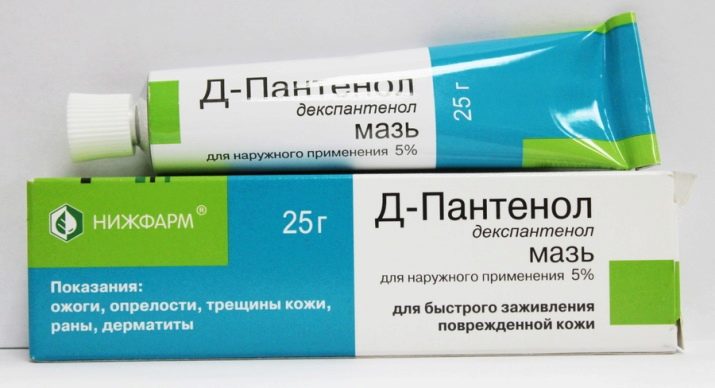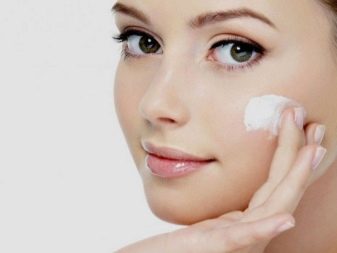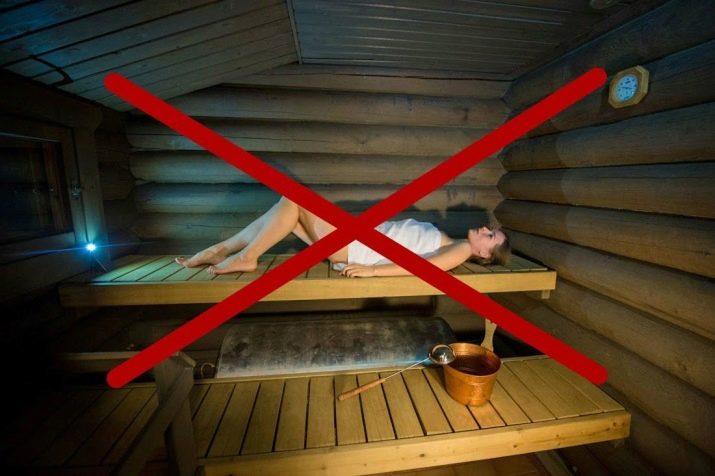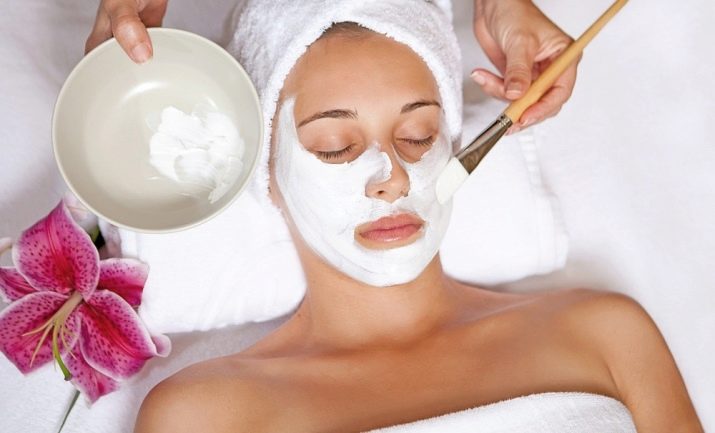Every girl probably heard about Cleopatra's milk baths: after applying milk and honey, the skin became tender and more elastic. Now it is difficult to find a beauty who uses similar methods of skin care, but the procedure of milk peeling as well as Cleopatra's bath helps to get rid of imperfections.
What it is?
Milk peeling, like any similar process, cleanses the skin - it removes the upper layers of tissue from dirt, sebum and dead cells. Lactic acid is a basis of means The gentle action of the acid allows the use of peeling at home. In the beauty salon, this procedure is not considered a rarity - customers often apply for this service.
Cosmetologists advise women to be under 40 years old. The drug has a lifting effect, makes the skin elastic, but it does not eliminate the deep age of wrinkles, sagging and scars. Milk peeling copes with other imperfections of the skin, for example, age spots, acne, peeling.
Lactic acid is produced by the breakdown of glucose. In industry, the substance is obtained through the reaction of fermentation - the oxidation of glucose. In nature, lactic acid is present in sour milk products, fermented alcohol.
Many tissues of our body regularly produce lactic acid, and the connective tissue of the skin and skeletal muscles constantly use and process lactate to replace the loss of fluid. Lactic acid, which is the basis of milk peeling, consists of molecules of small size - due to this, it easily penetrates into the cells. The substance neutralizes protein compounds, thereby cleansing the skin of dead cells.
As a result of the action, lactates accelerate metabolic processes: oxygen begins to flow into the cleaned pores, and the production of collagen and elastin is accelerated. Collagen is responsible for the tone, and elastin affects the elasticity of the skin.
Varieties
Milk peeling refers to surface chemical peels. The active ingredients of chemical peeling accelerate metabolic processes and activate the recovery process. Mechanical peeling cleans with scrubbing particles: sugar, olive and apricot kernels, jojoba seeds.
The delicate effect of peeling allows you to use it on almost the entire surface of the body. The complex of procedures will help to cope with shallow scars, stretch marks and pigment spots.
Of course, more often peeling is applied on the face and décolleté, but cosmetologists and dermatologists often advise applying lactate to eliminate imperfections throughout the body. The composition of the peeling for the body and face is almost the same, but for the body, manufacturers use more concentrated lactic acid.
Indications
- Dehydration of the skin (dehydration). Dry, dehydrated skin ages faster. The active influence of the sun's rays and the wrong selection of cosmetics lead to such a problem that needs to be urgently addressed. Lactic acid eliminates dryness, moisturizing and nourishing tissue.
- Acne. Lactate delicately removes excess sebum from the skin, which provokes the appearance of black spots, acne.
- Dark spots. Milky peeling helps to get rid of age spots on young skin.Fruit acid (lactic refers to fruit acids) contributes to the uniform distribution of melanin molecules and slows down the processes of tyrosinase production - this enzyme (enzyme) is responsible for the manifestation of pigment. As a result, the skin becomes lighter and more even shade. For age pigment spots it is necessary to apply deep peels in combination with other means.
- Stretch marks on the body and face. It will be very difficult to get rid of deep stretch marks - in such cases, dermatologists and cosmetologists recommend turning to surgical cosmetology. If the stretch marks are not wide and have appeared recently, then peeling with lactic acid will solve the problem of band-like atrophoderma.
- Mild forms of hyperkeratosis. Hyperkeratosis is a skin disease in which the cells of the stratum corneum divide too quickly. As a result, the skin becomes uneven, bumpy. Lactic acid normalizes the processes of regeneration and desquamation (the natural process of exfoliation and exfoliation of the epithelium).
- Excessive sebum secretion. Typically, this problem is characteristic of oily skin, but in summer girls with perfect skin also suffer from increased oily skin. Acid normalizes the process of sebum secretion, without overdrying the epidermis and dermis.
- Sensitive skin. Milk peeling does not act aggressively on tissues, therefore it is suitable for skin care that is prone to allergic reactions.
- Flabby and slack skin. Due to the additional moisture production of collagen and elastin is accelerated.
- Gray skin. Due to the action of lactate, the skin is updated faster, respectively, the appearance of the complexion changes for the better.
- Low pain threshold. Peeling - a painless process that causes a slight burning and tingling.
Milk peeling is often used before other procedures, such as shugaring and depilation. This is done in order to avoid the appearance of ingrown hairs.
Cosmetologists often carry out the procedure of milk peeling as a preparatory stage in front of various masks - in this way nutrients get into the cells of the dermis and epidermis more quickly.
This procedure allows the client not to retire from social activity - a slight peeling takes place in 2-4 days.
Harm and contraindications
The following are contraindications for the use of milk peeling:
- intolerance to drugs that are part of;
- herpes;
- pregnancy and lactation;
- acute inflammatory diseases;
- wounds on the body and face: on the places where the procedure is planned;
- photosensitivity drug (skin reaction in the form of rashes, redness and inflammation of the skin in the light due to the use of drugs);
- cold;
- diabetes;
- oncological diseases;
- spider veins and couperosis (vascular mesh on the face).
You can not start dairy peeling immediately after shugaring and depilation - during these procedures, the protective layer of the skin is damaged, and the additional use of lactate may adversely affect the condition of the epidermis and dermis.
At least a week you can not clean the skin with peeling after laser resurfacing and dermabrasion. When grinding with a special laser removes dead skin cells. In the process of dermabrasion, the damaged skin layer is scraped off - this method is used to get rid of post-acne, deep scars and pigment spots. Both procedures have a deep effect and injure the tissues, so it is necessary for the first time after their implementation to exclude milk peeling from your care.
Cosmetologists prohibit peeling in the summer - the sun's rays can severely damage the delicate cleansed skin.
Efficiency
The effect after milk peeling is noticeable after the first procedure. Experts advise to carry out a complex of procedures for a complete renewal and healing of the skin - you need to repeat the peeling procedure at least 5 times.
As a result of the action of lactates, the skin will change for the better:
- skin will be renewed;
- fine wrinkles will disappear;
- age spots and freckles will become less active;
- skin tone will get a healthy shade;
- skin will become hydrated, peeling will stop;
- the production of sebum will decrease;
- elasticity of tissues will return;
- acne and black spots will gradually disappear, inflammation will be much less.
In general, the reviews on milk peeling are positive. During the procedure, there may be an unpleasant burning sensation that causes discomfort. After peeling, peeling usually occurs, but this is a normal skin reaction. Of course, the first time is not recommended to spend a lot of time on the street to save the renewed skin from dust and sunlight.
Photos of people before and after the process allow us to evaluate the result. Indeed, freckles and pigment spots almost disappeared, the rash also decreased.
How to do?
Milk peeling can be carried out at home and in the cabin.
To make the procedure at home, you must purchase lactic acid (from 30 to 40%), you will also need medical alcohol (95%), cotton pads, face lotion.
- The first thing you need to do makeup removal and clean the skin. Be sure to wipe the skin with lotion.
- Then you should treat your face with alcohol, avoiding the area around the eyes, lips.
- After that, you need to apply lactic acid on the face with a cotton pad. You can mix a small amount of water with acid. This recipe is very simple, and at the same time it will help to avoid chemical burns. You must start with the forehead, then - the nose, cheeks and chin.
- Be sure to immediately note the time. If this is the first use of lactate, then the acid should be kept no longer than two minutes. With each subsequent procedure, the time should be increased.
- During the procedure, there is a burning sensation - this skin reaction is considered normal. But if the burning sensation is too strong, then it is urgent to wash off the remedy.
- Peeling should be rinsed off with cool water - hot water cannot be used, as a burning sensation may appear from the high temperature of the water.
Before you do the peeling, be sure to conduct a test: lactic acid should be applied to the inside of the forearm. If there is a tolerable burning sensation and a slight tingling, then the remedy can be used for the face.
2 weeks before the peeling does not need to sunbathe in the sun and go to the solarium. Before going out, you should apply cosmetics with an SPF of at least 15.
Sometimes tender skin needs pre-peeling preparation. Beauticians advise to apply lactic acid (2%) daily two weeks before the procedure.
The process of carrying out the milk peeling procedure in the salon is similar to the procedure at home. Often manufacturers for a stronger whitening effect is added to the tool hydroquinone. Indeed, this chemical compound perfectly removes traces of pigmentation. But it is toxic, and for this reason it is banned in Japan, Western Europe and some countries of Central Asia.
After using creams, masks, peels with hydroquinone, dermatitis and ocronosis (a condition in which the skin color darkens or becomes gray-blue) appears. In addition, the substance destroys collagen and elastin fibers. Before peeling, it is necessary to consult with a specialist who will carry out the procedure and find out the composition of the product.
Specialists can use not only lactic acid, but also various vitamins and supplements. Substances will help the skin to recover faster.
Beauticians after acid peels necessarily use a neutralizing gel to stop the action of the acid - after the procedure they moisturize the skin, apply oils and concentrates on it, for example, hyaluronic acid.
You should not carry out peeling too often - this process should be carried out with an interval of 2 weeks. The course of procedures is set depending on the problem that needs to be fixed. The course usually includes 5-10 procedures.
Redness and peeling after visiting the salon will appear a few more days. But in rare cases, inflamed skin can heal for weeks. Usually this is due to improper concentration. In this case, you need to use vegetable oils and panthenol - they accelerate the healing process of chemical burns.
Subsequent skin care
Post peeling care is very important. The skin after the procedure is very delicate - additional moisture will be required. After the milk peeling, you should regularly apply nourishing creams on the face in accordance with the type of skin. You can use panthenol - it not only moisturizes, but also promotes healing.
Well calms inflammations of shea butter, fireweed and borage. It is allowed to use face skin care products if there are no scrubbing particles in them. In this case, there should be no feeling of tightness.
You must use SPF 30 sunscreen when leaving the house, you can also choose cosmetics with a higher SPF factor. Ultraviolet rays adversely affect the condition of the skin - they provoke early aging, the appearance of pigment spots. The sun's rays cause severe damage to “unprotected”, “bare” skin after milk peeling.
In the first 10-12 days after the procedure, it is necessary to exclude from the daily care of the cream and washing products, in which there are alkaline additives, acids, enzymes and citrus oils. These components do not harm healthy skin, which is not damaged upper horny layer. But such substances are quite aggressive for unprotected tender skin after peeling.
Be sure to follow certain rules after the milk peeling:
- do not touch or comb the skin after the procedure;
- Do not apply decorative cosmetics for at least the first 24 hours;
- do not use aggressive washing means;
- Do not use the sauna, bath and pool.
After peeling, arrhythmia may occur, which takes place within 24 hours.
Milk Peeling is a procedure that can eliminate most skin problems. This method of dealing with imperfections is suitable for girls with low pain thresholds, rashes, pigmentation. Often, business women who have high social activity, refuse from such procedures, because after the majority of peels, the face becomes very red and swollen, which prevents free movement around the city. With milk peeling, such problems usually do not occur - redness and peeling take place within 2-4 days.
If this procedure suits you, then you should take a responsible approach to the choice of the salon and beautician. A good specialist will do his job, select the right concentration, advise good skin care products.
How to carry out a dairy peeling in house conditions, look in the following video.
